JAPANESE KIDNAPED BY NORTH KOREA
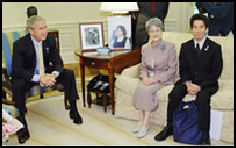
Parents of Megumi Yokata meeting
U.S. President George Bush In 2002, North Korea admitted that it abducted 13 Japanese nationals between 1977 and 1983 primarily it appears so they cold teach the Japanese language to North Korean agents. Most were abducted by North Korean agents who were dropped off by small boats on remote Japanese beaches. Some human rights group insist that maybe 90 were abducted. Many South Koreans were also kidnaped by the North Koreans.
A North Korean defector told Newsweek: “In our [spy] academy there were a number of Japanese." He said the Japanese consisted of one who willingly defected and one "who I believe were kidnaped from Japan...They were to give language training and teach us about life conditions outside North Korea."
Kim Jong Il apologized. He blamed the kidnaping on special agents “carried away by a reckless quest for glory” and said they had been punished. The North Korean government has said that two North Koreans in charge of the abductions were tried in 1998 on various charges. One was sentenced to death. The other was given a 15-year prison sentence. There is no way for people outside North Korea to confirm whether this is indeed true.
The Japanese government recognized 17 abductions. The 17th was Kyoko Matsumoto, who disappeared in 1977 in Tottorri Prefecture after failing to return from a knitting class. A defector from North Korea said he saw a woman that looked like her in North Korea A neighbor on the day she disappeared said he saw her talking to two men. When the neighbor asked what going on one of the men hit the neighbor and both men fled with Matsumoto.
Websites and Resources
Good Websites and Sources: Japan-North Korea Relations mofa.go.jp ; North Korea in Japan japanprobe.com ; 2003 Library of Congress Report on Japan-North Korea Relations pdf file fpc.state.gov/documents ; BBC Report on 2009 North Korean Missile Launch news.bbc.co.uk ; Abduction Issue Japanese Government on the Abduction Issue rachi.go.jp/en and kantei.go.jp ; Worldwide List of North Korean Abductees sukuukai.jp/narkn ; Film on the Megumi Story abductionfilm.com ; THINK, a Group Focused on the north Korean Abduction Issue think.s52.xrea.com
Links in this Website: JAPANESE MILITARY Factsanddetails.com/Japan ; CHANGING JAPANESE MILITARY Factsanddetails.com/Japan ; AMERICAN MILITARY IN JAPAN Factsanddetails.com/Japan ; JAPAN AND THE WORLD Factsanddetails.com/Japan ; TERRORISM, PIRACY AND KIDNAPPING AND JAPAN Factsanddetails.com/Japan ; JAPAN, IRAQ, IRAN AND AFRICA Factsanddetails.com/Japan ; SOUTH KOREA AND JAPAN Factsanddetails.com/Japan ; NORTH KOREA AND JAPAN Factsanddetails.com/Japan ; CHINA AND JAPAN Factsanddetails.com/Japan ; RUSSIA AND JAPAN Factsanddetails.com/Japan ; UNITED STATES AND JAPAN Factsanddetails.com/Japan ;
Good Websites and Sources on Foreign Affairs : Ministry of Foreign Affairs of Japan mofa.go.jp and mofa.go.jp ; Paper on Development of Japanese International Relations allacademic.com ; Wikipedia article on Foreign Policy of Japan Wikipedia ; Foreign Policy Magazine on the New Hatoyama Government foreignpolicy.com ; Electronic Journal of Contemporary Japanese Studies japanesestudies.org ;The World and Japan Database Project ioc.u-tokyo.ac.jp ;Japan in the World (last updated in 2003) iwanami.co.jp/jpworld ; Book: “ Japan’s International Relations: Politics, Economics and Security “ amazon.ca/Japans-International-Relations
Think Tanks and Research Groups: Japan Policy Research Institute jpri.org ; The Japan Forum on International Relations jfir.or.jp/e ; Japan Watch, Commentary on Political and Economic Issues jipr.org ; Japanese Institute of Global Communications glocom.org ; Japan Analysis and Research Through Internet Information dandoweb.com ; Documents Related to Postwar Politics and International Relations ioc.u-tokyo.ac.jp ; Foreign Aid Organizations: Japan and the IMF imf.org ; World Bank (click countries at the top or do a search) worldbank.org ;Japan International Cooperation Agency jica.go.jp ;
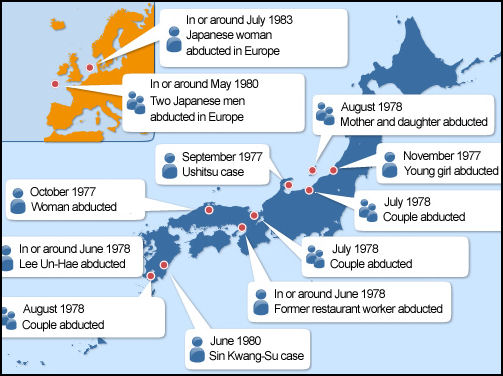
Japanese abducted by North Korea
Japanese Abductees Who Died in North Korea
Japanese nation Keiko Arimoto disappeared in Britain in July 1983. Toru Ishioka, another Japanese national, disappeared in Europe in the summer of 1980. Arimoto and Ishioka taught Japanese to North Korea agents. They were married in 1985 and had a daughter in 1986. All three reportedly died in November, 1988 from gas poisoning caused by a Korean-style coal heater. Their graves were reportedly washed away bya landslide and floods. Arimoto was abducted with the help of the wife of a Japanese hijacker who was involved in the hijacking of a Japan Airlines plane to North Korea in 1970.
Kauro Matsuki disappeared while traveling in Europe in the summer of 1980. He wrote a letter to his family postmarked from Poland, saying: "I live in Pyongyang with two other Japanese. Because of certain reasons, we came to live in Pyongyang for a long time. We are given a small allowance by the North Korean government. The economic situation is terribly bad and we don't have enough clothing and books. We just wanted to let you known that we are alive." He too taught Japanese to North Korean agents and died a car accident in August, 1996. His remains were returned to Japan.
Suichi Ichikawa, a 23-year-old public corporation employee, and Rumiko Masumoto, a 24-year-old office clerk, disappeared from Fujiagecho, Kagoshima Prefecture in August 1978 after they told their parents they were going to the sea shore to watch the sunset. They married in 1979. He reportedly died at a public beach by drowning after having a heart attack in September 1979 and she died of coronary illness in August, 1981. Their graves were said to have washed away in floods in 1995.
Yakeo Taguchi, a Tokyo bar hostess, disappeared from the Miyazaki-Aoshima coast in June 1978. Tadakaki Hara disappeared from the Miyazaki coast in June 1980. Taguchi and Hara were married in 1984. Tagucho reportedly died when his car slammed into a truck in July, 1986. Hara died of cirrhosis of the liver also in July 1986. Their graves were said to have washed away in floods caused by the collapse of a dam in 1995. Tahuchi was 24 when she was abducted. She worked as a language instructor with North Korean agents. Kim Hyon Hui, a North Korea terrorist who planted a bomb in civilian Korean airliner that killed 115 in 1987 revealed that she learned Japanese from Taguchi.
Megumi Yokata
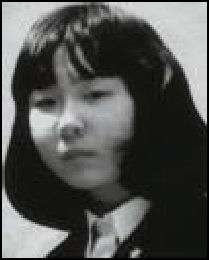
Megumi Yokata In November 1977, 13-year-old Megumi Yokata disappeared as she walked home from badminton practice in the coastal town of Niigata. She was last seen by a friend only 250 yards from her house, waiting at a traffic light with her badminton racquet in a white bag. Megumi’s parents had any idea what happened to her until they saw an article ten years later in a newspaper about North Korean agents kidnaping Japanese citizens.
Yokata may have seen some North Korean agents on a beach and they kidnaped her out of fear that she would report them. A defector said, "She was a smart girl who studied the Korea language very hard because she was told she would be taken back to her mother if she studied diligently. When she turned 18, she realized that she would never make it home. That was when she began to suffer psychological disorders and was placed in a hospital."
Yokata married a South Korean man and had a daughter, Kim Hae Goung. Yokata reportedly became depressed and hung herself in a Pyongyang hospital in March 1993. Kim Hae Goung was six when her mother died and said she had no idea that her mother was Japanese.

Megumi's husband Yokata’s husband, Kim Young Nam, talked to reporters in August 2006 during a reunion with his South Korean family at a North Korean resort. Now a member of the North Korean elite, he confirmed Pyongyang’s claim that she committed suicide. He said Yokota sustained a brain injury before they met and was taken to a special hospital “because she couldn’t lead a normal life” and tried to kill herself several times before finally succeeding in the hospital. Kim denied that he was kidnaped, he said he been rescued by North Koreans after his boat went adrift.
A film called the “Abduction: The Megumi Yokata Story” was made former Canadian televison producer Chris Sheridan and his wife Patty Kim. The winner of the Best Documentary Audience Award at the Sundance Film Festival, it recalls Yokata story’s and documents the activities of her parents Shigeru and Sakie who have frequently been in the news in Japan since the abduction issue arose in 2002.
Peter Frampton, the British singer-guitarist who was popular in the 1970, released a couple of songs dedicated to Megumi — “Asleep at the Wheel“ and “Suite Liberte“ — on his album “Thanks to Mr. Churchill”, released in April 2010. Noel Paul Stookey of Peter, Paul and Mary also wrote a song dedicated to Yokata called Megume.
Japanese Abductees Who Survived North Korea
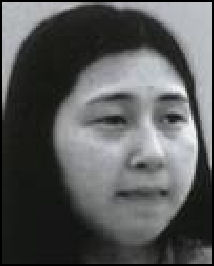
Hitomi Soga Yasushi Chimura and Fukie Hamamoto were kidnaped after having dinner in their hometown of Obama, Fukui Prefecture on July 7, 1978. Both 23, they had just gotten engaged and were scheduled to get married in four months. Instead they were separated for 16 months in North Korea and ultimately were given permission to marry. They had three children and lived in Pyongyang. Chimura worked as a translator at the social science research center.
Kaoru Hasuike, a 20-year-old college student, and Yukikio Okuda, a 22-year-old cosmetician, were abducted from Kashiwazaki, Niigata Prefecture in July 1978. They told their parents they were going out for a date. Hasuike’s bicycle was found at a library close to the sea shore where they met. They were married in North Korea in 1980. Hasuike worked as a translator at the social science research center. They have two children.
Hitomi Soga
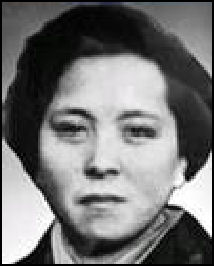
Soga's mother Hitomi Soga, a nurse, and her mother were abducted from Sado Island in August 1978. Around 7:30pm, while walking home after shopping, they were followed and attacked by three men who gagged them and put them in bags. They were placed on a small boat which traveled down a river and out to sea where they were put on a larger ship, which took them to North Korea. Soga arrived in North Korea the next day and a day after that was taken to Pyongyang. She never saw her mother again.
During her first months in North Korea Soga studied Korean and was moved around to a number of accommodation facilities. At one of these she met Yokata. They lived at the same place for about a year and played badminton and went hiking together but didn’t talk much about their abduction experiences out of fear of what might happen to them if they did.
In 1980, Soga married Charles Robert Jenkins, a former U.S. soldier, who disappeared across the North Korean border in 1965 and appeared in North Korean propaganda films. They had two daughters who attended a foreign language university in Pyongyang. Soga worked for a while as a translator of foreign novels and children’s films but was mostly a housewife. Jenkins was regarded as defector in the United States and could face charges for desertion or even treason.
Kaoru Hasuike’s Years in North Korea
In October 2012, Masatoshi Imai wrote in the Yomiuri Shimbun: “Former abductee Kaoru Hasuike has written a book that reveals the despair he went through during his 24 years trapped in North Korea, and how his family inspired him to keep living. The book, titled "Rachi to Ketsudan" (Abduction and Determination), was published by Shinchosha Co. [Source: Masatoshi Imai, Yomiuri Shimbun, October 19, 2012]
Hasuike, 55, was abducted by North Korean agents on the beach of Kashiwazaki, Niigata Prefecture, in July 1978. At first, stricken with fear and bewilderment, all he could do was scream, "Let me go home!" As it became clear there was little chance he could return home, thoughts of suicide crept into his mind.
Detained in a so-called guesthouse in a valley, watched by security guards and surrounded by barbed wire, he was shown anti-Japan movies by North Korean officials who served as supervisors and instructors. Hasuike was forced to read a collection of papers written by Kim Il Sung, the founder of North Korea.
Hasuike said he found a glimmer of hope amid this despair in May 1980 when he got married to Yukiko, who was abducted with him. They eventually had a daughter and a son. "The children became our reason for living," Hasuike said. Hasuike and his wife, 56, even lied to their children that the couple were "Koreans who returned from Japan," so the children would not suffer discrimination in the future. The children were strictly taught North Korean etiquette. When they turned 6, the children were taken to a dormitory about 150 kilometers away.
At the time, many North Koreans were starving to death due to severe food shortages. Corn was the staple food at the children's dormitory. When they returned to the dormitory after spending a summer vacation at home, Hasuike made them take soybeans because he was concerned about whether they were getting enough nutrition. "Make sure you eat five or six soybeans twice a day after counting them," he told his children.
Hasuike, who was involved in translation work, was torn while he rewrote Japanese newspaper articles in Korean. Usually, abduction-related stories were blacked out. But one day, he accidentally came across a photo that was not censored. The photo was for a story on the formation in Japan of an association of abductees' relatives in March 1997. In the photo, his father was tightly holding a portrait of Hasuike from his high school graduation album. His father's hair had thinned. Standing behind him was Hasuike's mother, who wore a tense expression. "They're alive," Hasuike recalled thinking. This "reunion" with his parents after 20 years apart made Hasuike feel lonely, and he had to fight for breath.
The Hasuikes and three other abductees returned to Japan for real reunions on Oct. 15, 2002. The couple's children followed them to Japan in May 2004. The two children have found jobs and Hasuike leads a fulfilling life working as a translator. But other abductees who have yet to be returned are constantly in the back of his mind.
Other Kidnaping Stories and Conspiracies Involving Japan and North Korea
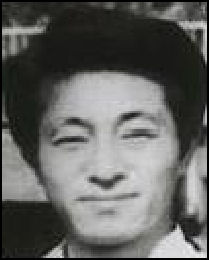
abductee Yasushi Chimura
married... Hasuike and his wife were abducted while walking along a beach in Kashiwazaki, Niigata Prefecture on an evening in July 1978. He said men appeared from nowhere and attacked him and his wife and threw them in cloth bags and carried them away in a boat. He said the lights of Kashiwazaki became a blur as his eyes swelled up from repeated punches during the beach attack. He told the Yomiuri Shimbun, “The lights were really soft. But all we say in Pyongyang two days later were the dim lights of naked light bulbs from apartment windows. Based on this difference, I knew we’d been brought to a totally different place.”
Hasuike said he had to work hard just to put food on the table. When there were poor rice crops course grains accounted for 90 percent of rationed grains. The family produced 1.4 tons of kimchi a year, which was vital in sustaining them in the winter. When power outages dragged on his family used firewood gathered in the mountains.
In 1978, a couple said they were thrown into sacks by abductors on a deserted beach in Toyama Prefecture but managed to escape when someone came along with a barking dog.
In 1983, North Korea kidnaped two Japanese sailors in the open seas and refused to turn them over until Japan "released" some North Koreans who had managed to escape from North Korea in makeshift boats and ende dup in Japan. Japan refused. In 1991, the men were finally released. The event is known in Japan as the Fujisanmaru incident.
In 1985, a famous North Korean spy was arrested while traveling under the name of 43-year-old Japanese cook. Investigator believed that the cook was lured to a beach and taken away by ship to North Korea. They spy used the cook’s family registration document to secure a Japanese passport.
In April 2000, Kim Young Dai a critic of the North Korean regime living near Osaka was found dead in a pool of blood with a kitchen knife by side. Some think he was killed by North Korean agents. Othere think he was killed by his girlfriend. Kim was the head of a group that published embarrassing photographs of the famine in North Korea. He also had left his wife and children because of an affair and then spurned his lover to try and get back with his wife.
Return of the North Korean Abductees to Japan
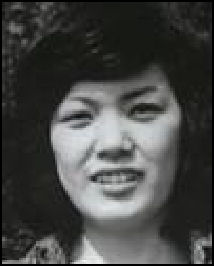
...abductee Fukie Hamamoto
in North Korea During Koizumi’s trip to Pyongyang, the North Korea government admitted that it had abducted 13 Japanese nationals but said only five of the 13 were still alive.
On October 15, 2002, five of the Japanese who were abducted by North Koreans returned to Japan. They were 1) 47-year-old Yasushi Chimura and 2) his 47-year-old his wife Fukie Hamamoto, 3) 45-year-old Kaoru Hasuike and 4) his 46-year-old his wife Yukiko Okuda, and 43-year-old Hitomi Soga. They were welcomed in a tearful reunion with around 40 relatives at Haneda Airport in Tokyo and given equally big welcomes when they returned to their home towns. They were only originally scheduled to stay for a few weeks but they ended up staying for good while their children remained in North Korea.
For months after the abductees returned home their every move was broadcast on televison. Shopping trips and visits with high school friends were top news stories. Politicians begged for photo ops with them. They met their favorite pop stars and were given money, training and jobs by the government.
Families of the eight abductees who were said by Pyongyang to have died questioned the credibility of the North Korea reports and demanded an investigation and answers to their questions. Needless to say authorities in Pyongyang were not very cooperative or forthcoming with information.
The adbuctees met with a cult deprogrammer that helped convince them to abandon their plans to return to North Korea.
Return of the Family of the Abductees
In May 2004 the three children of the Chimuras and the two children of the Hasiokes arrived in Japan. At the time the three Chimura children consisted of a 22-year-old daughter, a 20-year-old son and an a 16-year-old son. The two Hasioke children consisted of a 22-year-old daughter and 19-year-old son. Their release took place only hours after a meeting between Koizumi and Kim Jong Il, in which the Japanese leader promised to send 250,000 tons of food and $10 million in medical supplies to North Korea.
Soga’s family — Jenkins and daughters Mika and Belinda — returned in July 2004. The family arrived first in Indonesia and then a few days later flew to Japan. They moved to Sado island, where Soga is from. Mika was 18 at the time and Belinda was 21. When Soga saw Jenkins he smothered him with a big kiss. When her daughters arrived they all hugged and shed tears. It has d been 21 months since Soga had seen or talked to her family. Jenkins was reportedly happy to have easy access to American cigarettes again.
In September 2004, Jenkins turned himself in to U.S. military authorities in Japan. He pleaded guilty to four charges related to his desertion and assisting the enemy. As part of his plea bargain deal he was given a dishonorable discharge and served a 25 day jail sentence and was allowed to go free after that. It is widely believed that some kind of deal was struck with the Japanese government to let him off so easy. The legal action also brought to an end the longest desertion case in U.S. history. Jenkins ultimately got a job as a English teacher and has said he wants to become a Japanese citizen.
In December 2004, North Korea handed over some photographs, information on Megumi and 10 abductees who were said to have died. They also handed over what they said were the remains of Megumi. DNA test showed that the remains were not her. Photographs of Megumi were doctored. One showed shadows in two different directions. The information provided by North Korea also didn’t jive with testimonies by defectors and other abductees. Megumi’s saga became so well known a manga depicted her ordeal

Megumi anime
Kim Jong Un's Sister 'In Charge of Abductee's Daughter'
August 2012 Jiji Press reported: “A younger sister of North Korean leader Kim Jong Un, is in charge of taking care of Kim He Gyung, the daughter of Japanese abductee Megumi Yokota, the head of a group of families of South Korean abduction victims said. The group's head, Choi Sung Yong, cited information he had obtained from sources familiar with the matter. The North Korean leader instructed his sister, Kim Yeo Jong, to take charge of Kim He Gyung, 24, so she could be used as a bargaining chip in negotiations with Japan, Choi said. Kim Yeo Jong is a senior member of the Workers' Party of Korea and has authority over abduction issues, Choi said, quoting the sources. She and Kim He Gyung are working together, he said. [Source: Jiji Press, August 28, 2012]
In November 2012, Jumpei Momma wrote in the Yomiuri Shimbun: “Kyoko Matsumoto, 64, one of the Japanese believed to be abducted by North Korea, may have been moved to Pyongyang on orders from Kim Jong Un just before then leader Kim Jong Il's death in December last year, according to information The Yomiuri Shimbun obtained in South Korea. [Source: Jumpei Momma, Yomiuri Shimbun, November 26, 2012]
Choi Sung Ryong, a representative of the Association of Families of Abductees to North Korea, a group comprising families of South Korean abductees, said the information was obtained from North Korean sources early this year. Matsumoto, from Yonago, Tottori Prefecture, lived in Chongjin, a northeastern city in North Hamgyong Province, before moving to Pyongyang, according to the information.
Choi said Kim Jong Un began to be involved in diplomatic affairs before his father's death, ordering subordinates to "reconsider" the treatment of abductees and moving Matsumoto to Pyongyang. Choi said, "It appears there are still additional abductees whom North Korea can present to Japan, and Ms. Matsumoto may be one of them.”

inconsistancies on death certificates of abductees said to have died
Relations Between Japan and North Korea After the Return of the Abductees
After the return of the abductees, anti-North Korea sentiments ran high. North Korean ships and ferries that had routinely docked before in Japan without incident were suddenly given a thorough going over by Japanese customs officials and greeted by angry protestors, shouting “Go back to North Korea” and “Give back the families of the abductees..” In some cases the ships were ordered out to sea because of minor code violations found in vessel’s kitchen.
Japan wants the truth in what happened to the 12 of the 17 abductees who are said to have died. When pressured on the abduction issue, Pyongyang insists that attention should be focused on the treatment of North Koreans during World War II and the colonial period in the 1920s and 30s.
The United Nations draft adopted in 2006 raised the abduction issue. In April 2006, Sakie Yokata and her son Takuya met with U.S. President George Bush in the White House Oval office. Afterwards Bush said, “I have just had one of the most moving meetings since I’ve been president.”
In February 2006, Japan and North Korea held talks on the abduction issue. Not much progress was made. Japan spent three hours outlining its concerns on the matter. There were hints that the investigation into the abduction issue could end in the fall in 2008, easing tensions between the two nations and allowing the lifting of restrictions on travel.
Japanese Sanctions on North Korea
In addition to the international sanctions slapped on North Korea, Japan has imposed its own sanctions, including prohibiting the entry of North-Korea-registered ships to Japanese ports. After this no imports arrived from North Korea and exports declined by 87 percent to $440 million.
A seafood company was caught importing North Korea littleneck clams disguised as Chinese clams. It has its import license revoked for three months for breaching the sanctions against North Korea.
In April 2004, a bill was passed that allowed the government to bar North Korean vessels from certain ports. Many Japanese were outraged by the false information given in December 2004. There was widespread support for economic sanction against North Korea. The United States and South Korea urged Japan not to impose sanctions.

Megumi anime
Abduction Issue in Japan
The abduction issue still gets a lot of media attention in Japan. For a while in the mid 2000s, family members of the abductees — especially those of Megumi Yokata — were on television almost every night. Nationalists politicians put pressure on the television stations to keep the issue alive and burning.
Anti-North-Korea rallies have been held all over Japan. They usually featured family members of the abductees, their supporters and members of rightist organizations. One government poster used to promote such a rally showed a red map of North Korea covering the eyes of a Japanese youth, implying that Japanese need to open their eyes to the threat from North Korea.
Challenging the North Korea abduction issue is very risky. Those that have done it, even raising moderate objections to the amount attention the issue gets, have been harassed or even physically attacked by ultra-rights groups.
The North Korea abduction issue has been used by conservatives to push their agenda of revising the Constitution to promote patriotism in schools and raise the status of the military. The issue was key to the rise of Prime Minister Shinzo Abe.
Japan was upset over the decision by the United States to drop North Korea from its list of states that sponsor terrorism in October 2008.
In March 2006, a pro-Pyongyang business organization is Osaka was raided by police in connection with a Japanese man who was kidnaped in 1980.
The North Korea abductee issue definitely dropped down the agenda after Democratic Party of Japan came to power in August 2009.
A cable leaked by Wikileaks in December 2010 revealed a Chinese official criticizing Japan for being “obsessed” with the North Korean abduction issue, comparing Japan to a individual in a Chinese expression who is too weak to make something work but strong enough to destroy it.
See Drugs, Under Living
Image Sources: rachi.go,jp site ofr Japanese abducted by North Korea
Text Sources: New York Times, Washington Post, Los Angeles Times, Daily Yomiuri, Times of London, Japan National Tourist Organization (JNTO), National Geographic, The New Yorker, Time, Newsweek, Reuters, AP, Lonely Planet Guides, Compton’s Encyclopedia and various books and other publications.
Last updated January 2013
